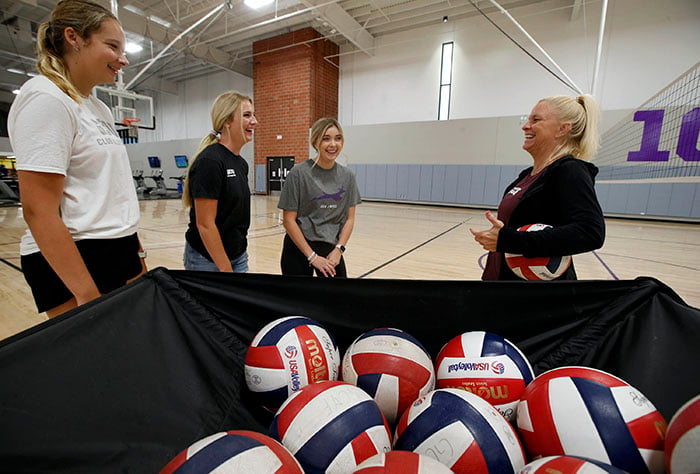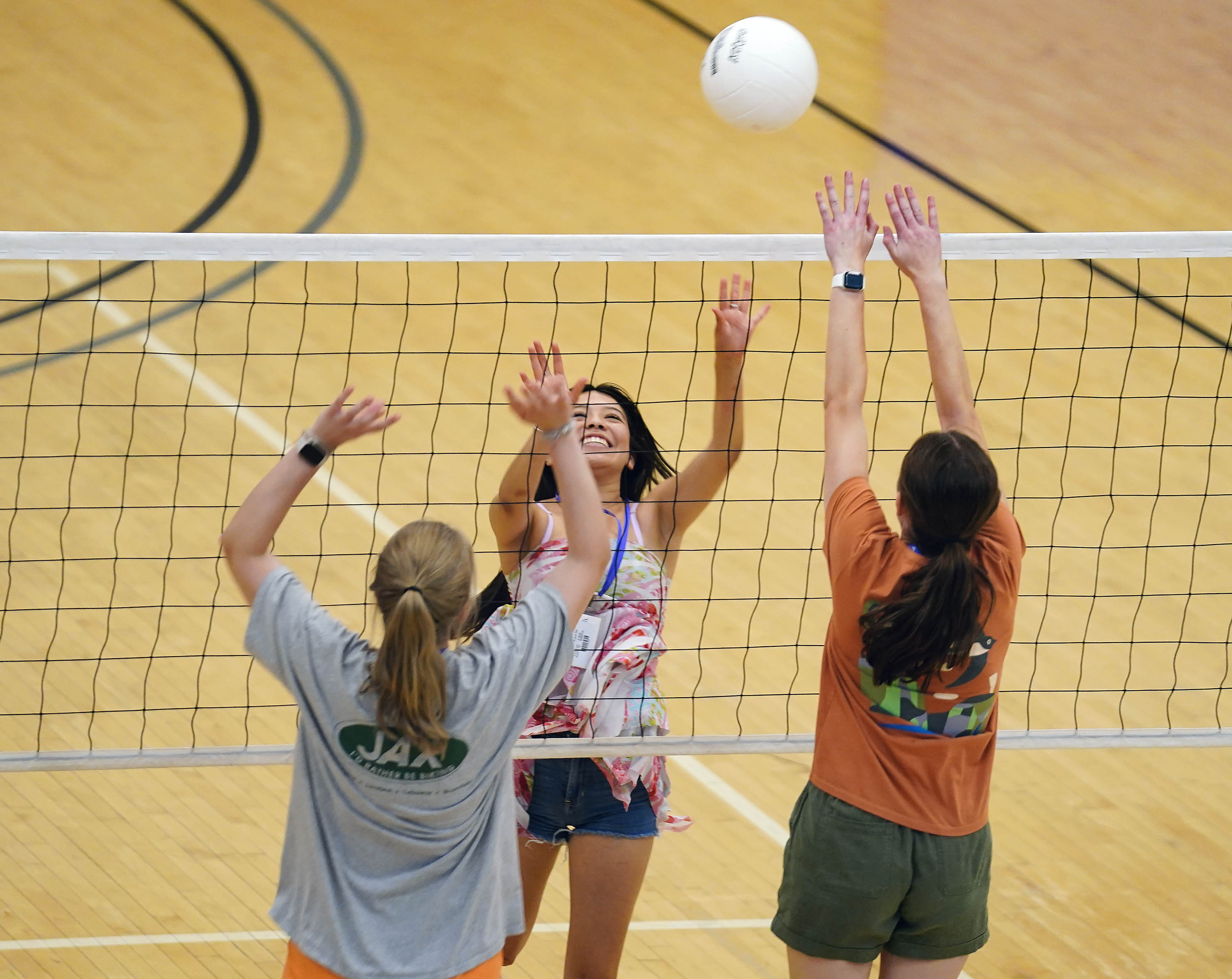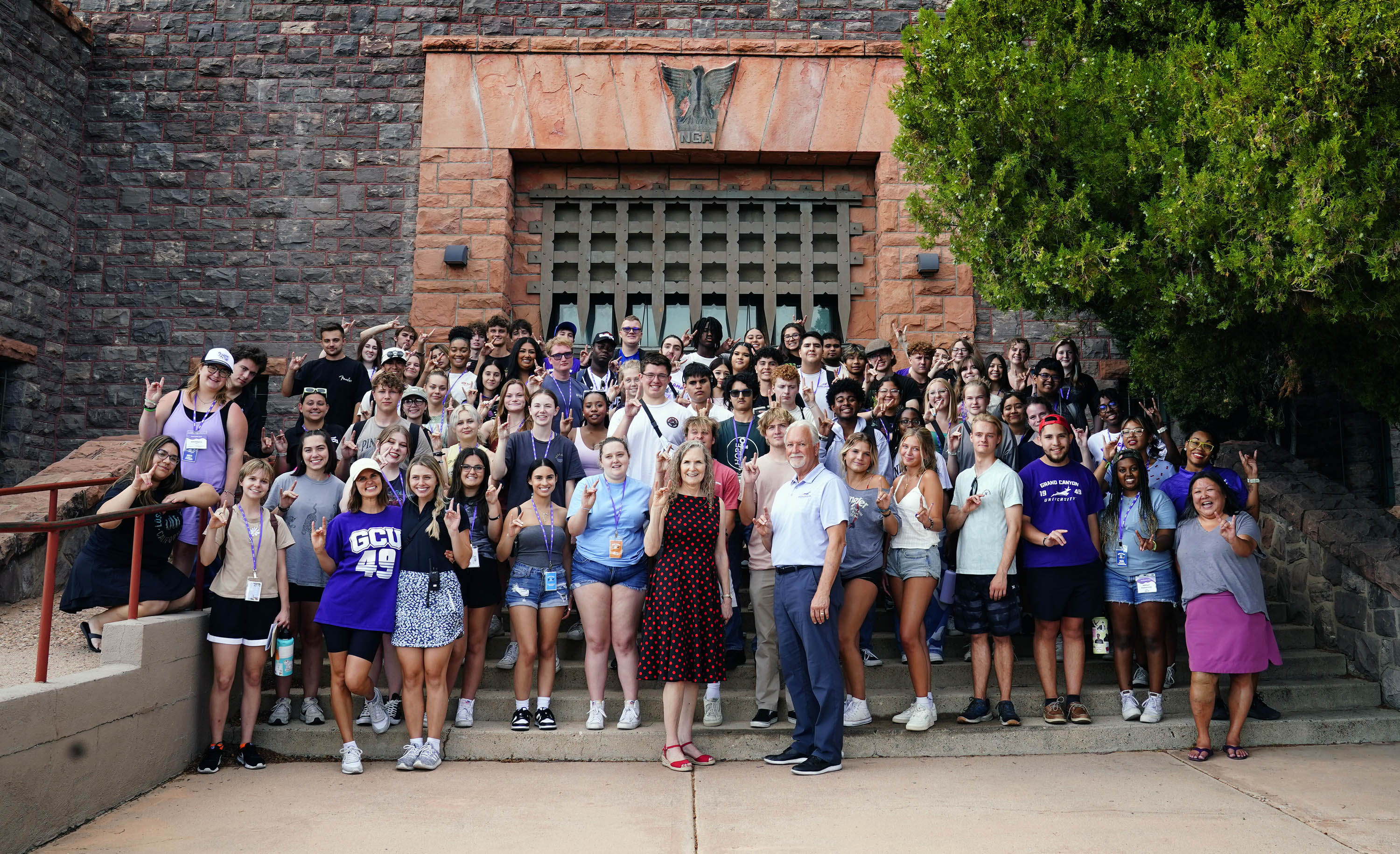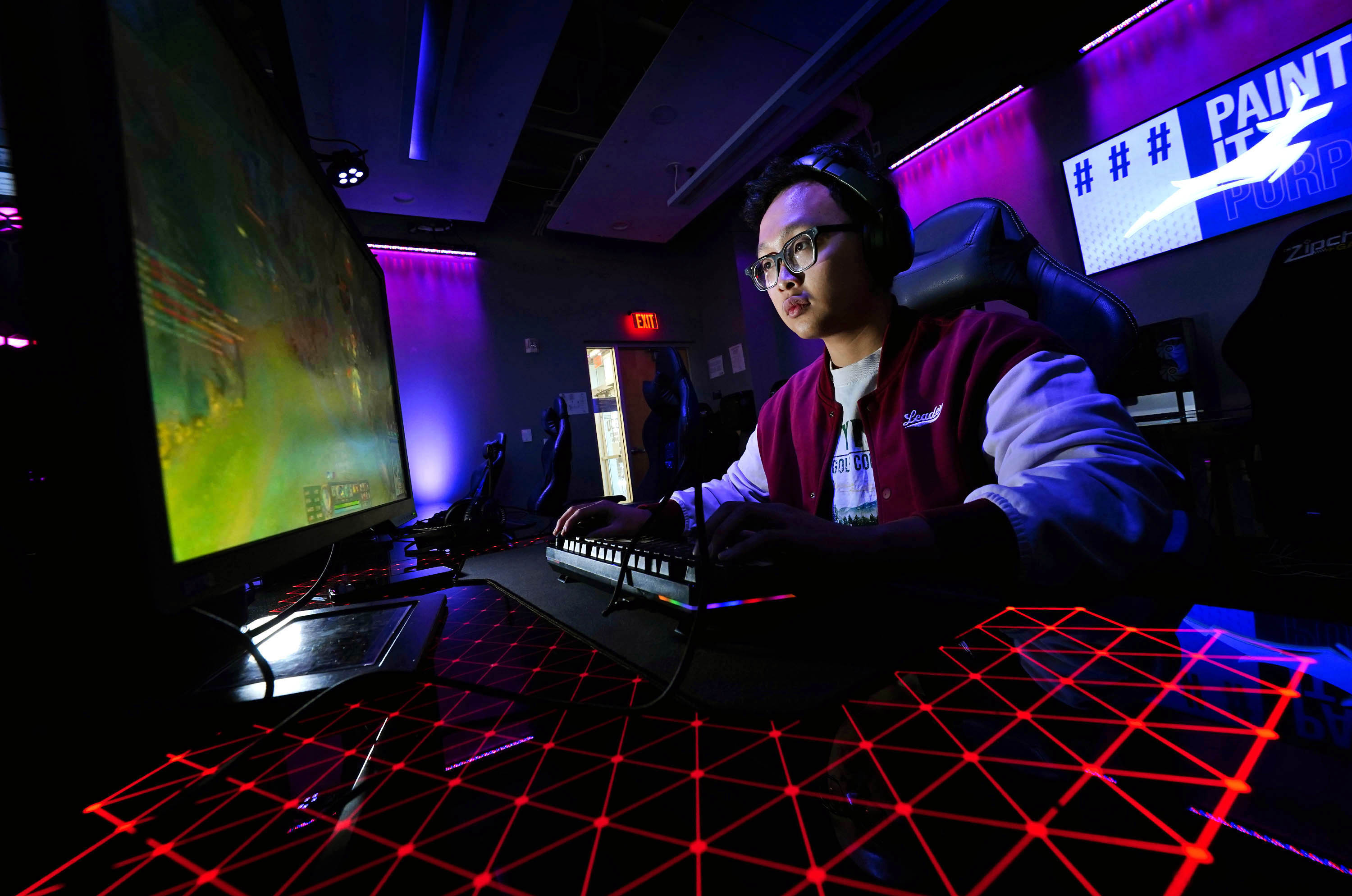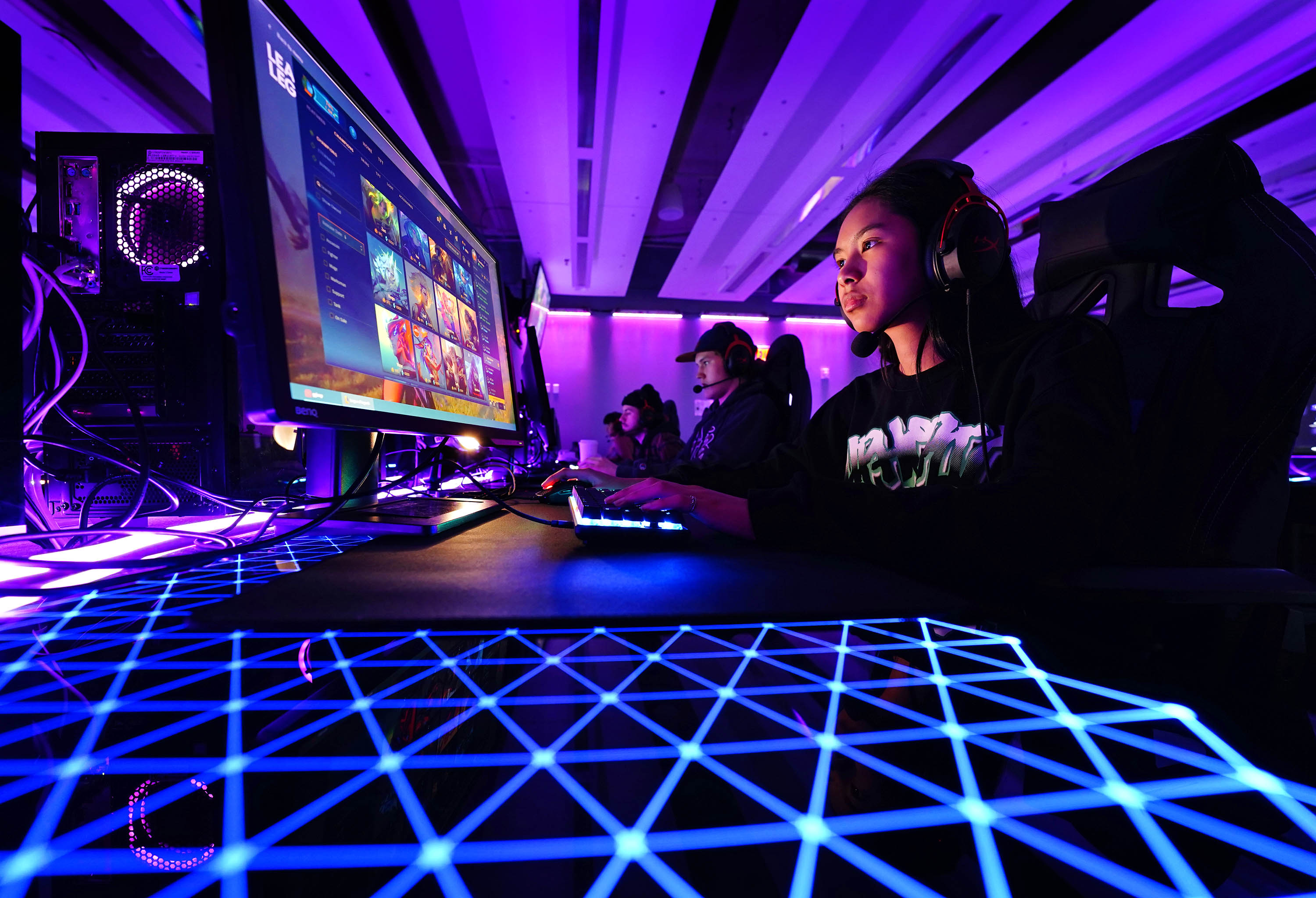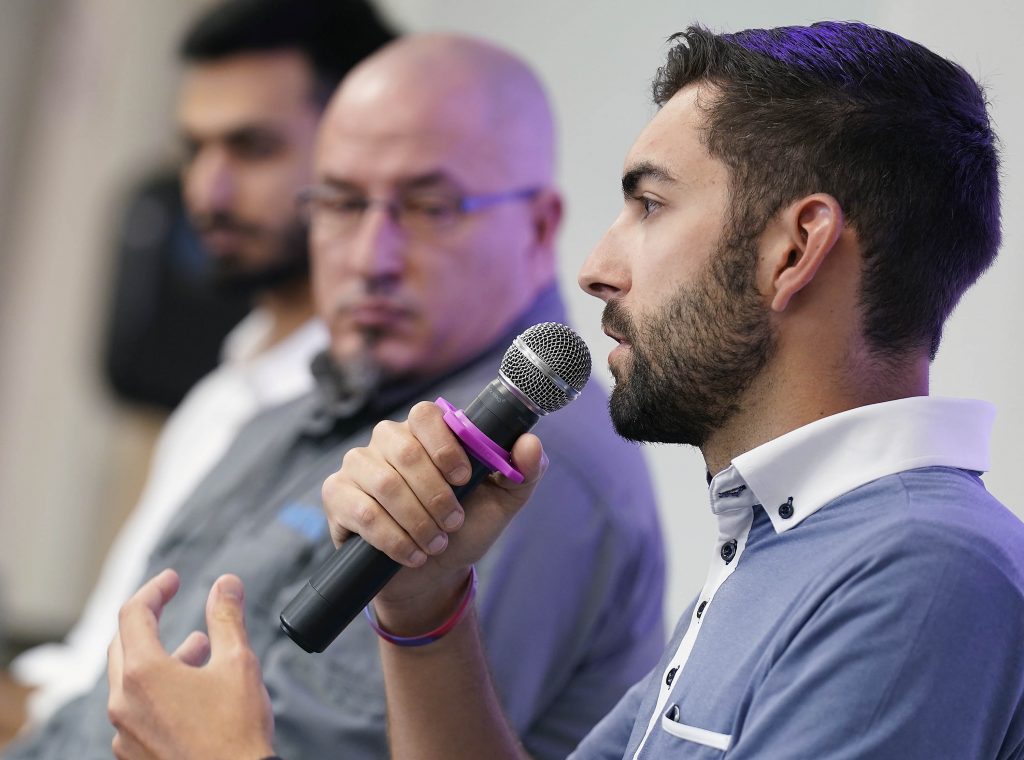
Speakers share how tech is used in nursing, construction, law enforcement
Photos by Ralph Freso
Morpheus in “The Matrix” offered a choice of realities: The red pill, or the blue one? But today’s realities extend beyond red or blue; there’s that stealthy green one, too.
A trio of panelists shared their work in augmented reality (AR) and virtual reality (VR) with Grand Canyon University’s technology students Thursday at the Cyber Center of Excellence. It was the first Technology Deans’ Speakers Series of the semester, and the first in the series the department live streamed and recorded so online students could attend virtually.
The talk, organized with the help of GCU’s Strategic Employer Initiatives & Internships, complemented what the Technology Department is itself doing in that realm. That includes Dr. Isac Artzi’s Human-Computer Interaction and Communication class, where students use mixed reality headsets such as the Microsoft HoloLens and Oculus 2 VR goggles to bring projects to life. A Research and Design Program team also has tackled such projects as creating an immersive crime scene simulation and human trafficking training for front-line health-care workers. Then there's the recently opened virtual reality lab, which the department hopes will bring interest to a cross-discipline collection of students.
The speakers at Thursday's talk distinguished between AR and VR: VR, they said, totally replaces a real-life environment with a simulated one, while AR merely enhances the real world with simulated elements (think Pokémon GO, which places virtual creatures in the real world).
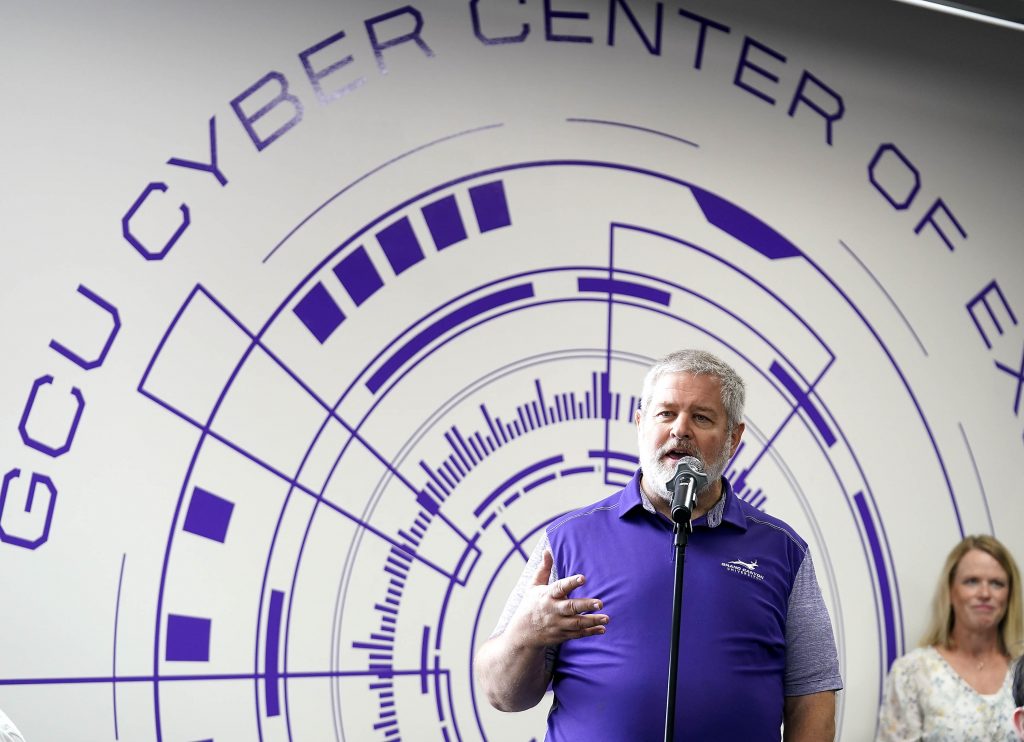
Then they shared how they use those technologies to advance the different fields they have worked in, from construction to law enforcement training to medical training, showing how these technologies are permeating every industry.
Joe Samyn, before becoming a lead engineer for Phoenix-based Connected Vehicle Optimization, worked for a startup in Michigan that focused on converting university medical school labs into VR and AR simulations for mobile devices and the Oculus Quest virtual reality headset.
His company would go into a nursing program lab, much like GCU’s own nursing simulation labs, and observe students as they worked with nursing mannequins or with actors who portray patients. They also re-created how the nursing students interacted with objects in a hospital room.
“We just kept iterating and iterating and iterating until we finally got to a point where nursing students were saying, ‘Oh, yeah, this is EXACTLY what I’m experiencing in my labs,” Samyn said.
He shared with students some of the challenges he experienced, including working with Oculus Quest controllers that are supposed to simulate hands.
“But you can’t really grab anything, you can’t really use your fingers necessarily right, so we had to … figure out how to translate that into interactions that are possible with regard to what we had access to.”
“I don’t have the luxury in my space to be able to use controllers,” said panelist Lon Bartel, Director of Training and Curriculum for VirTra, which creates high-end simulators to train military and law enforcement personnel. “ … When I’m dealing with a soldier in a battle space, he’s going to have one-to-one physical reality with his weapons platform. I can’t have a controller that mimics where the magazine release is. … It’s got to be 100%. Otherwise, I create a training artifact that would really cost him his life or somebody else’s.”
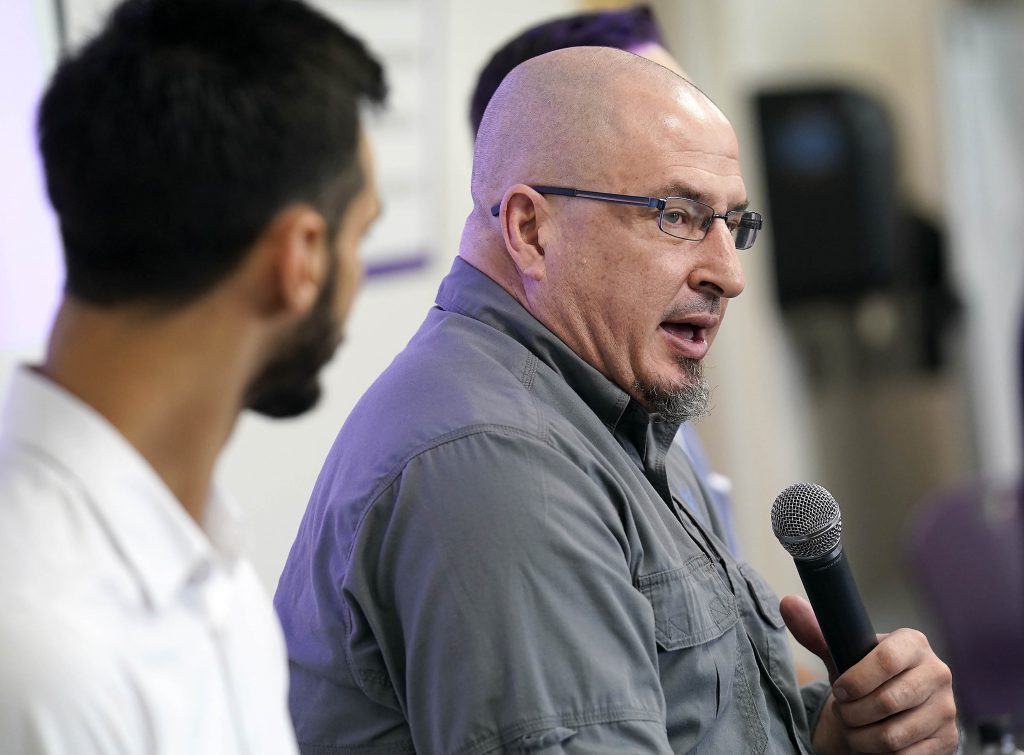
The simulators are mixed martial arts-type octagons with five screens set up all around a trainee. Digital images are projected onto those screens, perhaps a domestic violence victim on one screen, then an abuser on another screen. Trainees carry a simulated weapon and react to those images.
“It’s a virtual environment. It’s not necessarily a virtual reality as you think of in a headset,” Bartel said, adding how his company’s CEO moved toward digital simulation after the Sept. 11, 2001, terrorist attacks because he wanted to improve training for law enforcement.
Bartel also spoke about some of the problems virtual realities create, beyond controllers that can’t simulate a weapon.
It’s the issue of the “uncanny valley” — the idea that humans develop an aversion to computer-generated imagery. He likened it to the creepiness factor of characters in the film “The Polar Express.” His company relies, instead, on capturing human interaction with high-definition cameras rather than VR.
“I know this psychological undercurrent occurs. … How do I parse out that a soldier’s decision-making was based on behavior cues alone or the uncanny valley — and that’s a problem. … I don’t have the luxury of allowing an uncanny valley effect to somehow get in there."
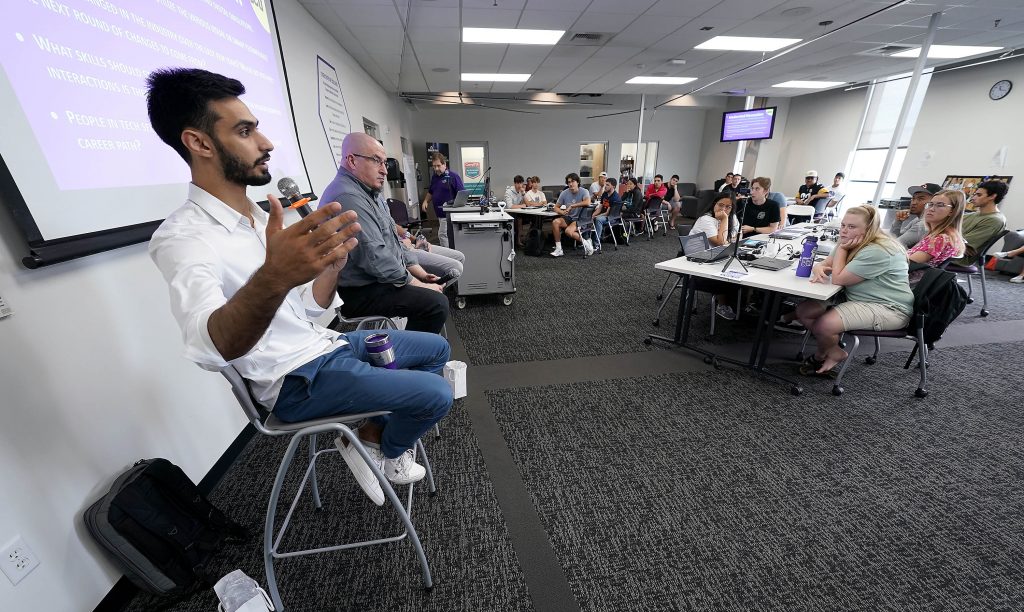
Another problem in the VR world: Motion sickness VR users might feel because the rate at which a user’s head and eyes travel through space is faster than what they’re seeing in refresh rates on the screen. Also, if the audio is off and doesn't quite match the visuals, said Samyn, that can cause nausea.
Rosendin Director of Business Analytics Dr. Jad Chalhoub, who also oversees innovative technology, said Rosendin uses both AR and VR.
In construction, everything is designed in 3D, but plans in the field historically have been presented in 2D. His company started using AR once it became more mature to present those construction designs to crews in the field: “They can see it at full scale; they can see exactly what we want.”
His company has its own application that takes 3D designs, compresses them and places them on an iPad or Microsoft HoloLens.
Head of Technology Programs Rob Loy, who moderated the talk, said he heard that some VR technology has advanced so much that you can see tears coming down faces and asked the speakers what the future looks like for AR/VR.
Bartel had the opportunity to test a Teslasuit, a full body suit that uses electrical stimulation to create sensations of cold or heat.
Samyn said he expects to see a lot of interesting things in computer graphics and more advancement in AR headsets, which are shrinking in size.
But “we’ve got a long way to go,” Samyn added.
He said his team would have to use video game tricks to render the highest quality simulations.
“But even then, we were still getting, ‘Oh, this is good enough to get the point across, but it’s not reality. It’s not realistic.' I want to say we’re there, but we’re not.”
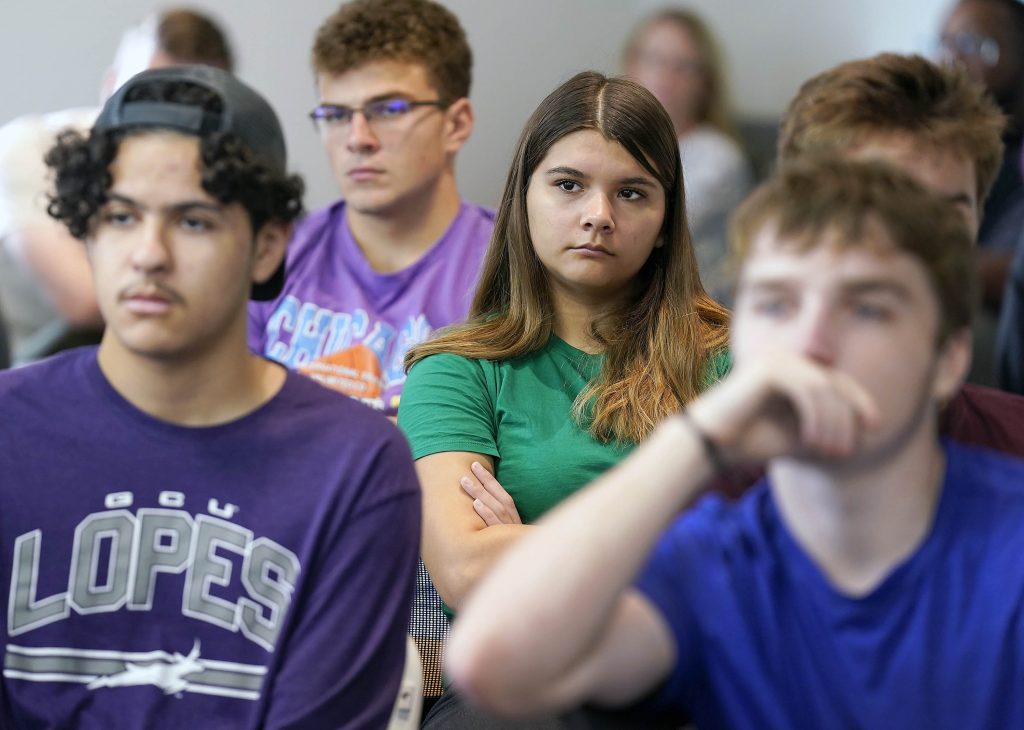
The speakers also discussed their journey to the VR/AR world.
Samyn’s first degree is in audio engineering. He was a “studio rat,” he said, but what first got him interested in computer science was that the studios he worked in were always broken, so he started getting into electrical engineering and doing the repairs himself. A professor noticed his technology prowess and suggested he talk to a professor who works in AR/VR.
That professor hired him at his start-up. Samyn started getting into C-sharp programming in Unity.
“That’s when I started realizing I love computer science,” he said. He moved to Phoenix — his sister teaches at GCU — to get his computer science degree.
Chalhoub was a civil engineer before realizing it wasn’t for him. He was working on a master’s degree when he met a professor who also was exploring AR and VR.
“I didn’t exactly know too much about AR and VR but got to working on it. I liked it a lot,” Chalhoub said.
And Bartel doesn’t work directly in the technology space, he said, but his career brought him to it.
Bartel’s advice to students: Be a team player.
Problem-solving in college is, can you Google the right thing? Problem-solving when you're innovating is using your brain and everything you've learned to try to put together a solution and come up with something new.
Joe Samyn, Lead Engineer, Connected Vehicle Optimization
He said his test for an applicant is that he gives that applicant a project. The test isn’t how that person did on the project, it’s how they handle feedback.
“I need somebody to look at other perspectives and interact with team members that may have a different perspective,” Bartel said.
Samyn, who has hired many GCU students, said if students focus on one thing, make it problem-solving: “Problem-solving in college is, can you Google the right thing? Problem-solving when you’re innovating is using your brain and everything you’ve learned to try to put together a solution and come up with something new.”
He declared that students won’t find a job in technology that won’t pay them well. Instead, he said, “Find a job that’s interesting and learn. That will matter more than anything that will come down the road, and I promise you, the money will come.”
Chalhoub, who added that problem identification is important, too, told students that technology moves so fast that a lot of what students will learn at GCU will be outdated in 18-24 months.
But, he said, “The value proposition that you will bring to any given company that you will work for is not what you know. … The value proposition that you bring is how fast you can keep learning,” red pill, blue pill or otherwise.
GCU senior writer Lana Sweeten-Shults can be reached at lana.sweeten-shults@gcu.edu or at 602-639-7901.
***
Related content:
GCU News: Students’ high-tech projects impress industry



